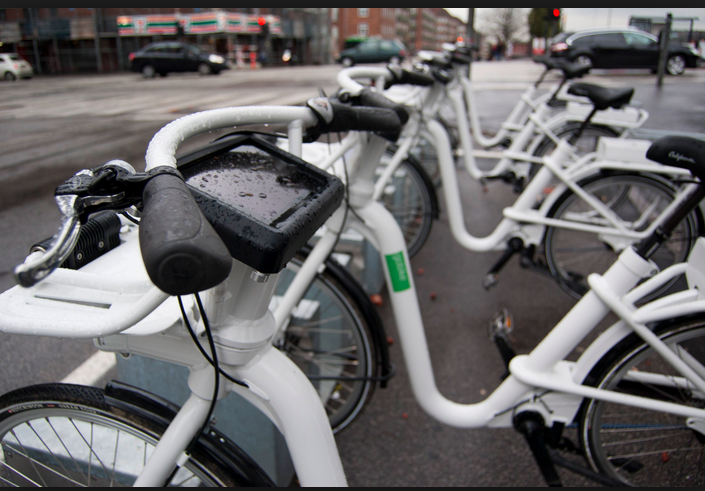I recently participated in a study visit to Copenhagen, organised by the Young Urbanist Network of the Academy of Urbanism. This proved to be an excellent opportunity to understand the impact of pro-cycling policies in Denmark.
The Bicycle Account records that Copenhagen is very friendly to cyclists, with 45% of all journeys to work or education made by bike, up from 36% ten years ago. For residents of the city, the figures are 63%, up from 52%.
It is interesting to compare Copenhagen with London as regards mode share for all trips: bike C 30%, L 2%; car C 33%, L 37%; walk C 17%, L 24% ; public transport C 20%, L 37%. So compared with London, promotion of cycling in Copenhagen has reduced public transport use markedly, walking significantly and car use just a little.
The Bicycle Account estimates that there is a net socioeconomic benefit of DKK 1.62 per km (£ 0.18) for a cycle trip during rush hour, in comparison with the journey not having taken place. The main benefits are convenience (time saved) followed by health. For a car, there is a loss of DKK 5.63/km.
The main feature of cycling in the city and beyond is the general provision of dedicated cycle lanes, located between the pavement and the carriageway, separated by kerbs from both. Only on residential roads or narrow historic city centre streets do cyclists have to share space with cars. In addition, there are traffic signals for bikes with give them a head start (typically 6 seconds). Car drivers defer to bikes when they need to cross a cycle lane.
I took the opportunity to try the electric bikes available for rental on the streets, equipped with an iPad-like display for login, payment and satnav route. This behaved like a normal bicycle, with a boost from the power-assist – very pleasant. These electric bikes seem aimed at tourists since residents all have bicyles and the city is flat, so little need for a power-boost.
The question I had in mind at the start of this trip was: how can we get people out of cars onto bikes? – something that seems difficult in Britain. What I learned is that, with vision and perseverance, and in particular by segregating cyclists from general traffic, it is possible gain a very substantial share of trips for bicycles, but largely by switching from public transport and walking. It is still hard to get people out of their cars, even in such a cycle-friendly city as Copenhagen.

